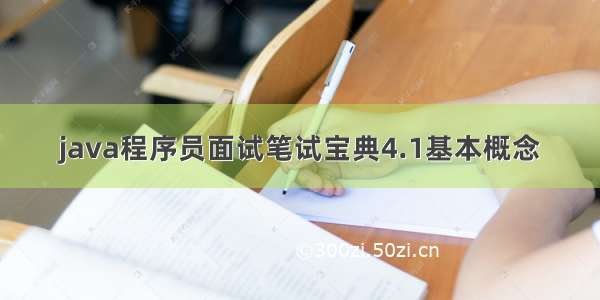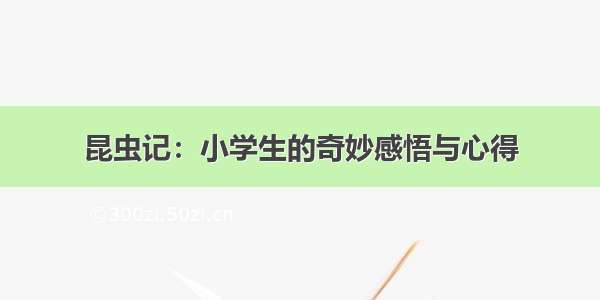
1.java语言是由C++语言改进并重新设计而来的。
2.java语言中的方法属于类中的成员(number)?
错误:在java中,方法分为静态方法和非静态方法。静态方法是类成员,非静态方法是实例成员。
3.为什么需要public static void main(String[] args) {}这个方法?
是java程序的入口方法,其他定义格式:1)public与static没有先后关系static public void main(String[] args) {}2)也可以把main方法定义为final:public static final void main(String[] args) {}3)也可以用synchronized来修饰main方法public static synchronized void main(String[] args) {}
4.实现在main()方法执行前输出“Hello World”?
package com.zcl.test;public class Test {static{System.out.println("Hello World1");}public static void main(String[] args) {System.out.println("Hello World!");}static{System.out.println("Hello World2");}}
5.java程序初始化的顺序?
父类静态变量,父类静态代码块,子类静态变量,子类静态代码块父类非静态变量,父类非静态代码块,父类构造函数子类非静态变量,子类非静态代码块,子类构造函数
例1:package com.zcl.test;class Base{static{System.out.println("Base static block");}{System.out.println("Base block");}public Base(){System.out.println("Base constructor");}}public class Derived extends Base {static{System.out.println("Derived static block");}{System.out.println("Derived block");}public Derived(){System.out.println("Derived constructor");}public static void main(String[] args) {new Derived();}}结果:Base static blockDerived static blockBase blockBase constructorDerived blockDerived constructor例2:package com.zcl.test;public class Testclass {public static void main(String[] args) {new A();}}class B extends Object{static{System.out.println("Load B1");}public B(){System.out.println("Create B");}static{System.out.println("Load B2");}}class A extends B{static{System.out.println("Load A");}public A(){System.out.println("Create A");}}结果:Load B1Load B2Load ACreate BCreate A
6.java中的作用域?
java中变量有三种:成员变量,静态变量,局部变量其中成员变量有四种作用域需要注意的是:这些修饰符只能修饰成员变量,不能修饰局部变量;private和protected不能用来修饰类只有public,abstract,final可以用来修饰类
实例方法可以直接调用其他类的实例方法|超类的实例方法和类方法吗?当其他类或者超类被private修饰时不能调用。
7.一个java文件中可以定义多个类,但是只能有一个类被public修饰,并且这个类的类名与文件名必须相同。
8.构造函数的作用是在对象实例化时初始化对象的成员变量。
普通方法也可以与构造方法有相同的方法名。
9.为什么java中有些接口没有任何方法?
没有任何方法声明的接口称为标识接口,用来表示实现它的类属于一个特定的类型。例如Cloneable和Serializable在使用时候经常用instanceof来判断实例对象的类型是否实现了一个给定的标识接口。
例1:要开发一款游戏,游戏里有一个人物专门负责寻找有用的材料,假设这个任务只收集武器和矿石,不会收集垃圾,下面通过标识接口来实现这个功能。package com.zcl.test;import java.util.ArrayList;interface Stuff{}//矿石interface Ore extends Stuff{}//武器interface Weapon extends Stuff{}//垃圾interface Rubbish extends Stuff{}//金矿class Gold implements Ore{public String toString() {return "Gold";}}//铜矿class Copper implements Ore{public String toString() {return "Copper";}}//枪class Gun implements Weapon{public String toString() {return "Gun";}}//榴弹class Grenade implements Weapon{public String toString() {return "Grenade";}}//石头class Stone implements Rubbish{public String toString() {return "Stone";}}public class Test {public static ArrayList<Stuff> collectStuff(Stuff[] s){ArrayList<Stuff> al = new ArrayList<>();for (int i = 0; i < s.length; i++) {if(!(s[i] instanceof Rubbish)){al.add(s[i]);}}return al;}public static void main(String[] args) {Stuff[] s = {new Gold(),new Copper(),new Gun(),new Grenade(),new Stone()};ArrayList<Stuff> collectStuff = collectStuff(s);System.out.println("The usefull Stuff collected is:");for (Stuff stuff : collectStuff) {System.out.println(stuff);}}}
10.java中clone方法的作用?
例1:java中对象和引用的区别?java在处理基本数据类型时,都是按值传递,其他类型都是引用传递对象除了在函数调用时是引用传递,在使用“=”赋值时也采用引用传递package com.zcl.test;class Obj{private String str = "default value";public void setStr(String str) {this.str = str;}public String toString() {return str;}}public class TestRef {private Obj aObj = new Obj();private int aInt = 0;public Obj getaObj() {return aObj;}public int getaInt() {return aInt;}public void changeObj(Obj inObh){inObh.setStr("change value");}public void changeInt(int inInt){inInt = 1;}public static void main(String[] args) {TestRef oRef = new TestRef();System.out.println("=========引用类型============");System.out.println("调用changeObj之前:"+oRef.getaObj());oRef.changeObj(oRef.getaObj());System.out.println("调用changeObj之后:"+oRef.getaObj());System.out.println("=========基本数据类型============");System.out.println("调用changeInt之前:"+oRef.getaInt());oRef.changeInt(oRef.getaInt());System.out.println("调用changeInt之后:"+oRef.getaInt());}}结果:=========引用类型============调用changeObj之前:default value调用changeObj之后:change value=========基本数据类型============调用changeInt之前:0调用changeInt之后:0例2:package com.zcl.test;class Obj{private int aInt = 0;public int getaInt() {return aInt;}public void setaInt(int aInt) {this.aInt = aInt;}public void changeInt(){this.aInt = 1;}}public class TestRef {public static void main(String[] args) {Obj a = new Obj();Obj b = a;b.changeInt();System.out.println("a:"+a.getaInt());System.out.println("b:"+b.getaInt());}}结果:a:1b:1
使用clone方法的步骤:1)实现clone的类首先需要继承Cloneable接口2)在类中重写Object类中的.clone方法3)在clone方法中调用super.clone()4)把浅复制的引用指向原型对象新的克隆体
对上面的例子引入clone方法如下:例3:package com.zcl.test;class Obj implements Cloneable{private int aInt = 0;public int getaInt() {return aInt;}public void setaInt(int aInt) {this.aInt = aInt;}public void changeInt(){this.aInt = 1;}protected Object clone(){Object o = null;try {o = super.clone();} catch (CloneNotSupportedException e) {e.printStackTrace();}return o;}}public class TestRef {public static void main(String[] args) {Obj a = new Obj();Obj b = (Obj) a.clone();b.changeInt();System.out.println("a:"+a.getaInt());System.out.println("b:"+b.getaInt());}}结果:a:0b:1
当类中只有一些基本的数据类型时,采用上述方法就可以;当类中包含一些对象时,就需要用到深复制;实现方法是在对对象调用clone()方法完成复制之后,接着对对象中的非基本类型的属性也调用clone方法完成深复制。
例4:package com.zcl.test;import java.util.Date;class Obj implements Cloneable{private Date birth = new Date();public Date getBirth() {return birth;}public void setBirth(Date birth) {this.birth = birth;}public void changeBirth(){this.birth.setMonth(3);}protected Object clone(){Obj o = null;try {o = (Obj) super.clone();} catch (CloneNotSupportedException e) {e.printStackTrace();}//实现深复制o.birth = (Date) this.getBirth().clone();return o;}}public class TestRef {public static void main(String[] args) {Obj a = new Obj();Obj b = (Obj) a.clone();b.changeBirth();System.out.println("a="+a.getBirth());System.out.println("b="+b.getBirth());}}结果:a=Mon May 21 15:29:20 CST b=Sat Apr 21 15:29:20 CST 原型模式(Prototype)中就需要clone一个对象实例
11.什么是反射机制?
反射允许程序在运行时进行自我检查,同时也允许对其内部的成员进行操作,能够实现在运行时对类进行装载。反射机制提供的功能:1)得到一个对象所属的类2)获取一个类的所有成员变量和方法3)在运行时创建对象(主要)4)在运行时调用对象的方法
例1:在运行时动态地创建类的兑现package com.zcl.test;class Base{public void f(){System.out.println("Base");}}class Sub extends Base{public void f(){System.out.println("Sub");}}public class Test {public static void main(String[] args) {try {Class c = Class.forName("com.zcl.test.Sub");Base b = (Base) c.newInstance();b.f();} catch (Exception e) {e.printStackTrace();}}}
在反射机制中,如何获取Class类呢?1)Class.forName("类的路径")2)类名.Class3)实例.getClass()java创建对象的方式有哪几种?1)通过new语句实例化一个对象2)通过反射机制创建对象3)通过clone方法创建一个对象4)通过反序列化的方式创建一个对象
12.package有什么作用?
1)提供多层命名空间,解决命名冲突2)对类按功能进行分类,使项目的组织更加清晰
13.如何实现类似于C语言中函数指针的功能?
函数指针最重要的功能是实现回调函数即函数先在某处注册,而它将在稍后某个需要的时候被调用
例:程序员张三写了一段程序a,其中预留有回调函数接口,并封装好了该程序。程序员李四要让a调用自己的程序b中的一个方法,于是他通过a中的接口回调属于自己的程序b中的那个方法。例:在实现排序算法时,可以通过传递一个函数指针来决定两个数的先后顺序,从而最终决定该算法是按升序还是降序排列。具体而言:先定义一个接口,然后在接口中声明要调用的方法,接着实现这个接口,最后把这个实现类的一个对象作为参数传递给调用程序,调用程序通过这个参数来调用指定的函数,从而实现回调函数的功能。package com.zcl.test;//接口中定义了一个用来比较大小的方法interface IntCompare{public int cmp(int a,int b);}class Cmp1 implements IntCompare{public int cmp(int a, int b) {if(a>b){return 1;}else if (a<b) {return -1;}else {return 0;}}}class Cmp2 implements IntCompare{public int cmp(int a, int b) {if(a>b){return -1;}else if (a<b) {return 1;}else {return 0;}}}public class Test {public static void insertSort(int[] a,IntCompare cmp){if(a!=null){for (int i = 1; i < a.length; i++) {int temp = a[i],j = i;if(cmp.cmp(a[j-1], temp)==1){while(j>=1 && cmp.cmp(a[j-1], temp)==1){a[j] = a[j-1];j--;}}a[j] = temp;}}}public static void main(String[] args) {int[] array1 = {7,3,19,40,4,7,1};insertSort(array1, new Cmp1());System.out.println("升序排列");for (int i = 0; i < array1.length; i++) {System.out.print(array1[i]+" ");}int[] array2 = {7,3,19,40,4,7,1};insertSort(array2, new Cmp2());System.out.println();System.out.println("降序排列");for (int i = 0; i < array2.length; i++) {System.out.print(array2[i]+" ");}}}结果:升序排列1 3 4 7 7 19 40 降序排列40 19 7 7 4 3 1 策略设计模式所用思想
















